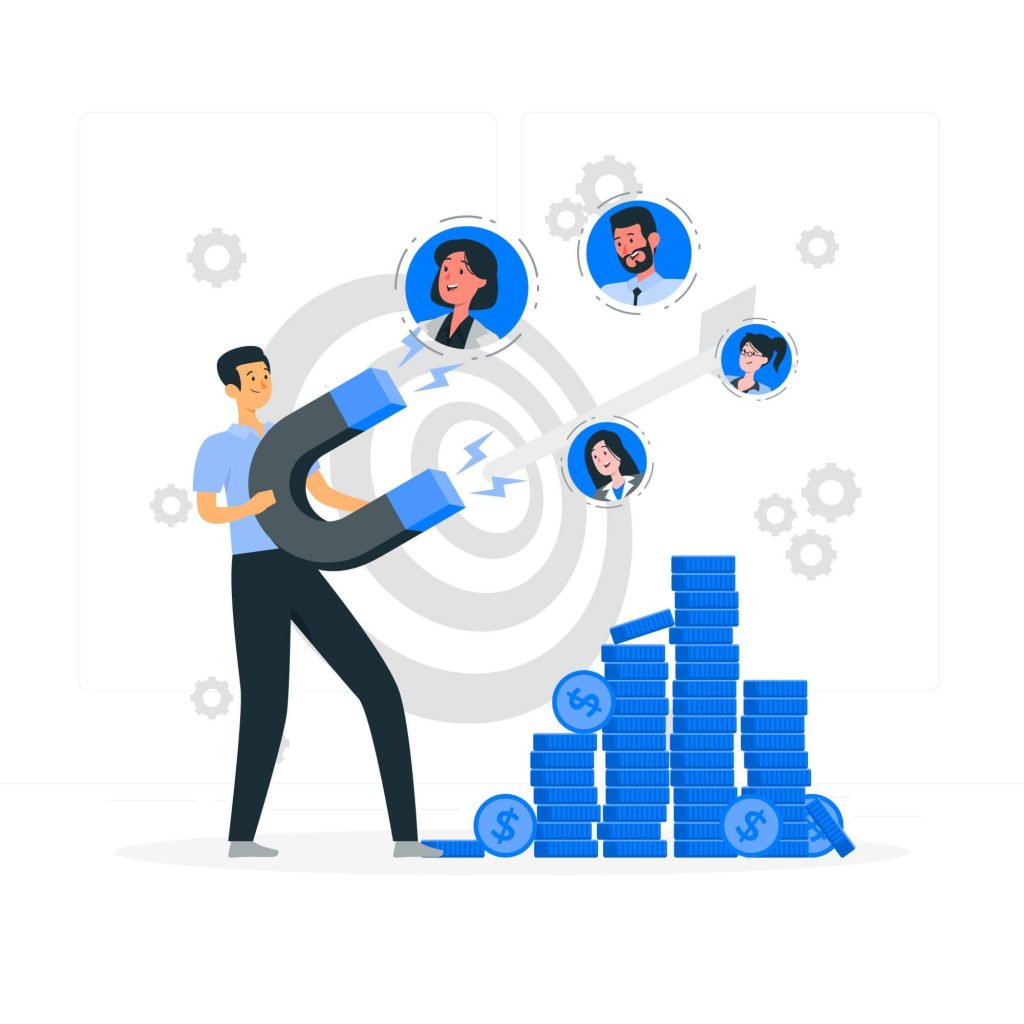Do you often find it hard to focus on your current task because your mind keeps drifting to something else? Perhaps you worry whether you finished that email correctly, or you’re still thinking about that earlier conversation. If so, you might be suffering from attention residue.
Attention residue is a common 21st-century challenge that can leave you feeling frustrated, overwhelmed, and like you’re never accomplishing enough. It can sabotage your productivity, well-being, and the quality of your work. In this ultimate guide, we’ll explain what attention residue is, its causes, its negative impacts, and most importantly, practical strategies to combat it and regain your focus.
What is Attention Residue?
Attention residue is the term used to describe the phenomenon of having your attention stuck on a previous task when you switch to a new one. It happens when you don’t fully complete or resolve the first task before moving on to the second one.
For example, imagine you’re working on a report, but then you decide to check your Instagram for a few minutes. When you return to your report, your mind lingers on what you saw on your Instagram feed. This lingering mental distraction is the essence of attention residue.
Our brains are wired to complete tasks. Unfinished tasks create mental ‘open loops’ that linger, dividing your focus and draining mental resources. Attention residue reduces your cognitive capacity and impairs your performance on the current task. According to a study, this phenomenon can cost as much as 40% of your productive time. This means working slower, making more errors, missing details, and potentially producing subpar work. Attention residue can also leave you feeling stressed, frustrated, or unhappy with your output. That’s a significant impact on your overall productivity and well-being.
What Causes Attention Residue?

Attention residue isn’t just annoying; it has real consequences. Let’s break down the key culprits, including internal and external factors, that disrupt our ability to transition between tasks effectively, contributing to attention residue:
- Unfinished Tasks: When you leave a task unfinished or unresolved, it creates a mental ‘open loop’ that keeps nagging at you until you close it. This might be leaving an email half-drafted, a project without a clear next step, or even a conversation without closure.
- Interruptions: Both external distractions (phone calls, notifications, colleagues) and internal distractions (mind-wandering, self-generated worries) shatter your focus. Each time you are pulled away, it takes time and cognitive effort to regain your previous flow, leading to attention residue.
- Anticipations: Whether you’re anxiously awaiting a deadline or excitedly looking forward to a fun event, dwelling on the future can distract from the present and hinder your focus, leaving you vulnerable to attention residue.
- Switching Contexts: Our brains take time to adjust between different modes of thinking. Moving from creative work to analytical tasks, or vice versa, requires mental recalibration, leaving you vulnerable to attention residue.
- Decision Fatigue: The sheer quantity of decisions we make daily – from what to wear to what to prioritize – depletes our mental energy. This makes us more prone to lingering thoughts and difficulty focusing later in the day.
The Science Behind Attention Residue
While it’s easy to blame ourselves for attention residue, there’s compelling science explaining why our brains have trouble letting go of unfinished business. Let’s look at a few key concepts:
- Task Switching: Our brains rely on a complex network of regions and are not designed for true multitasking. When we think we’re doing several things at once, we’re switching rapidly between tasks. When we switch tasks (for example, moving from writing a report to checking email), several things happen including context deactivation and activation, and task-specific processing. This process of deactivating, activating, and adjusting also consumes mental resources makes task-switching so demanding and leaves us more vulnerable to distraction. It’s like having to reboot your computer software every time you want to use a different program.
- The Zeigarnik Effect: Psychologist Bluma Zeigarnik discovered that we tend to remember unfinished tasks far better than completed ones. While you can use this to your advantage (I covered how to use the Zeigarnik effect for productivity in a different post), it is why those lingering mental ‘open loops’ are so persistent – your brain is trying to remind you to wrap them up!
- Working Memory Overload: Think of your working memory as the mental workspace that holds the information you need to complete the task at hand. This information could be anything from remembering a phone number to holding onto complex calculations. However, working memory has a limited capacity. Imagine it as a small whiteboard. If you try to cram too much information onto the board (unfinished tasks), there’s no space left for new things (focusing on the current task). Unfinished tasks taking up space in working memory make it harder to concentrate on new information and reduce your capacity for the task at hand.
Strategies for Combating Attention Residue

Combating attention residue and regaining your focus isn’t just about willpower. It requires a strategic approach combining techniques, environment optimization, and a shift in our work. Here’s a breakdown of key strategies to cultivate better focus.
-
Mindful Task Completion: The key to preventing attention residue is to wrap up tasks with intentionality. Consciously closing tasks and using transition rituals helps your brain move on more effectively. You’ll learn more about developing these habits in my upcoming post on long-term focus habits.
-
Deep Work: Deep work refers to extended periods of focused, distraction-free concentration on cognitively demanding tasks. It’s a powerful way to boost your productivity, creativity, and the quality of your work. Learn how to harness deep work in my dedicated guide.
-
Workspace Optimization: Your physical environment significantly impacts your ability to focus. Decluttering, minimizing distractions, and strategically creating your workspace is key. I shared more in-depth tips for creating a focus sanctuary in this post.
Remember: Improving focus is an ongoing practice. Experiment with different techniques, identify what works best for you, and be patient with yourself. Small, consistent changes over time lead to significant progress!
Is Attention Residue Sabotaging My Focus? (A Checklist)

Attention residue can manifest in subtle ways we don’t always attribute to a scattered focus. This checklist can help pinpoint how it might be impacting you:
- Difficulty Switching Gears
- Do you find yourself “stuck” on previous tasks, struggling to transition mentally to new ones?
- Does it take you significantly longer than you expect to get into the flow of a new task?
- Foggy Mind
- Do you feel mentally scattered or unfocused, even when trying to concentrate?
- Is it difficult to recall simple information or hold even short conversations without your mind wandering?
- Lingering Concerns
- Do thoughts about unresolved tasks, past conversations, or upcoming events keep popping into your head?
- Do you find yourself checking your email, or social media, or revisiting a document much more often than necessary?
- Increased Errors & Oversights
- Are you making more mistakes than usual, even on simple tasks?
- Do you find yourself missing important details or having to redo work?
- Procrastination Tendencies
- Do you struggle to start tasks, feeling overwhelmed or mentally blocked?
- Do you put off important work in favour of less essential activities?
- Elevated Stress & Frustration
- Do you feel anxious or frustrated due to an inability to focus?
- Is there a sense of your work quality or output suffering because of attention residue?
How to Interpret Your Results
This checklist isn’t meant to be a definitive diagnosis. Rather, use it as a tool for self-awareness. If you answered ‘yes’ to a few questions, it might signal areas where attention residue is impacting your focus and productivity. The more your experience resonates with these points, the more likely the strategies we discussed will make a significant difference
Conclusion: Reclaim Your Focus, Unlock Your Potential
Attention residue isn’t something to resign yourself to. It’s a battle fought in the trenches of your daily work life, and you now have the arsenal to win. Mindful task completion, harnessing the power of deep work, and optimizing your workspace are your weapons of choice.
The fight against distraction is ongoing, but with each small change, each focused work session, and each victory over the lingering ‘open loops,’ you become more resilient. Focus isn’t just about productivity. It’s about reclaiming control of your mind, elevating the quality of your work, and living a more intentional and fulfilling life.
Ready to take the first step? Choose ONE strategy you’ve learned today and commit to implementing it this week. Notice the difference it makes. Then choose another – and another. Small steps turn into powerful strides. Your focus journey starts today!
Frequently Asked Questions
1. What is attention residue meaning?
Attention residue refers to the lingering mental distraction caused by a previous task that remains even when you switch to a new one. This mental ‘residue’ reduces your focus and cognitive capacity, hindering your ability to fully engage with your current work. Imagine trying to write a report while still thinking about an email you just sent; that’s attention residue at work.
2. What is the difference between time pressure and attention residue
While both can hinder your mental focus, they’re distinct. Time pressure is the external stress caused by deadlines or having a heavy workload. Attention residue is an internal mental distraction where thoughts from a previous task linger, interfering with your ability to concentrate on your current work, even if you have ample time.
3. How can we reduce attention residue?
Here are a few effective strategies:
- Mindfully Complete Tasks: Before switching focus, try to reach a natural stopping point in your previous task or take a moment to consciously “close” it.
- Schedule Focused Work Blocks: Designate specific times for distraction-free work on your most important tasks to improve mental focus.
- Take Breaks Between Tasks: Stepping away, even for short periods, can help reset your mind.
- Manage Distractions: Turn off notifications, find a quiet workspace, and practice saying “no” to interruptions when necessary to reduce distractions and protect your focus.
4. How do interruptions affect worker productivity?
Interruptions, whether from colleagues, notifications, or external distractions, break your focus and contribute heavily to attention residue. This leads to slower work output, increased errors, and lower overall productivity. Studies show it can take several minutes to regain full concentration after an interruption.
5. Who discovered attention residue?
The concept of attention residue was first identified and studied by Sophie Leroy, a business professor at the University of Washington Bothell, in 2009. Her research has shed light on the cognitive mechanisms behind this phenomenon and its impact on productivity.
6. How long does attention residue last?
The duration of attention residue can vary depending on various factors, such as the complexity of the previous task, the individual’s ability to switch focus, and the presence of distractions. It can last from a few minutes to several hours, but with intentional strategies, you can minimize its impact and regain your focus more quickly.
7. How to increase your focus?
To increase your focus, you can try various strategies, including:
-
- Creating a distraction-free environment
- Setting clear goals and priorities
- Breaking down large tasks into smaller, manageable steps
- Using time management techniques
- Practicing mindfulness and meditation
- Taking regular breaks
- Getting enough sleep and exercise
Featured Image by wayhomestudio on Freepik



12 thoughts on “Attention Residue: Causes, The Science, and How to Avoid It for Better Focus”
I also think attention residue can give room for procrastination as well. Thanks for sharing sir
That’s very correct
Very helpful. Thank you sir
Thank you for stopping by, Ife
True!
Attention residue sure slows down efficiency and limits one’s productivity.
Thank you sir!
Thank you for reading.
Thanks for sharing Bro.
thank you for this masterpiece
Thanks for reading Biggest
Thank you for sharing
Glad you found it helpful
Informative! Thank you sir.